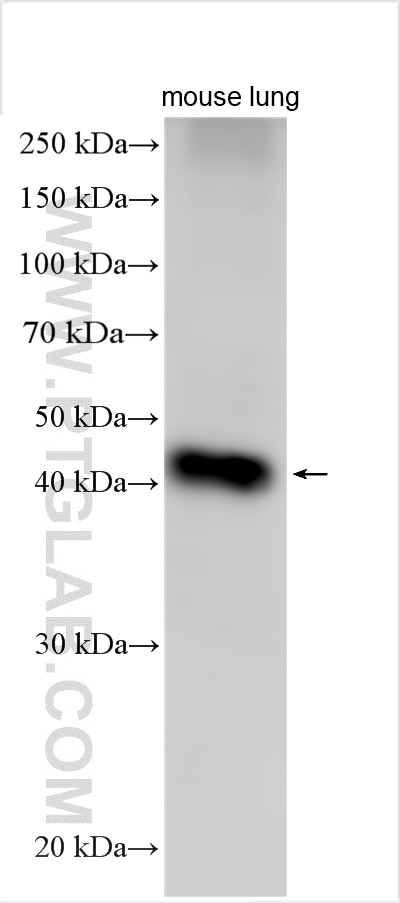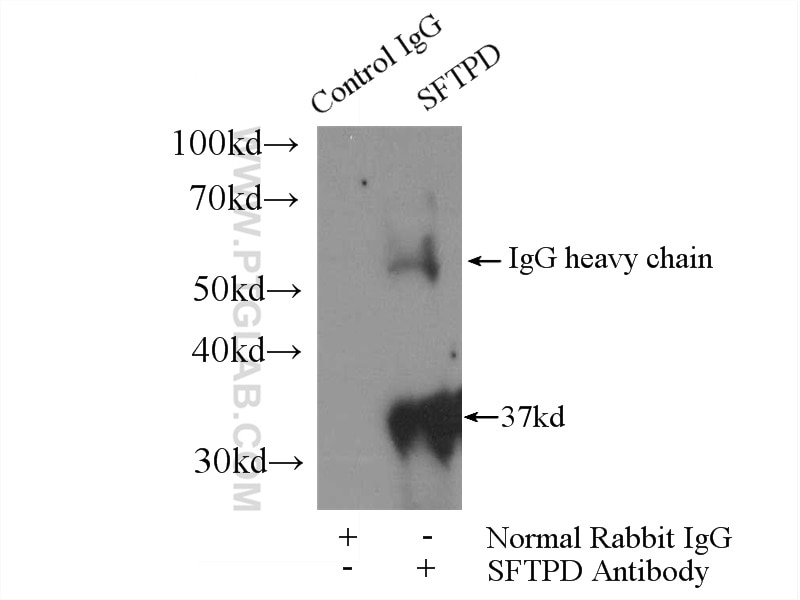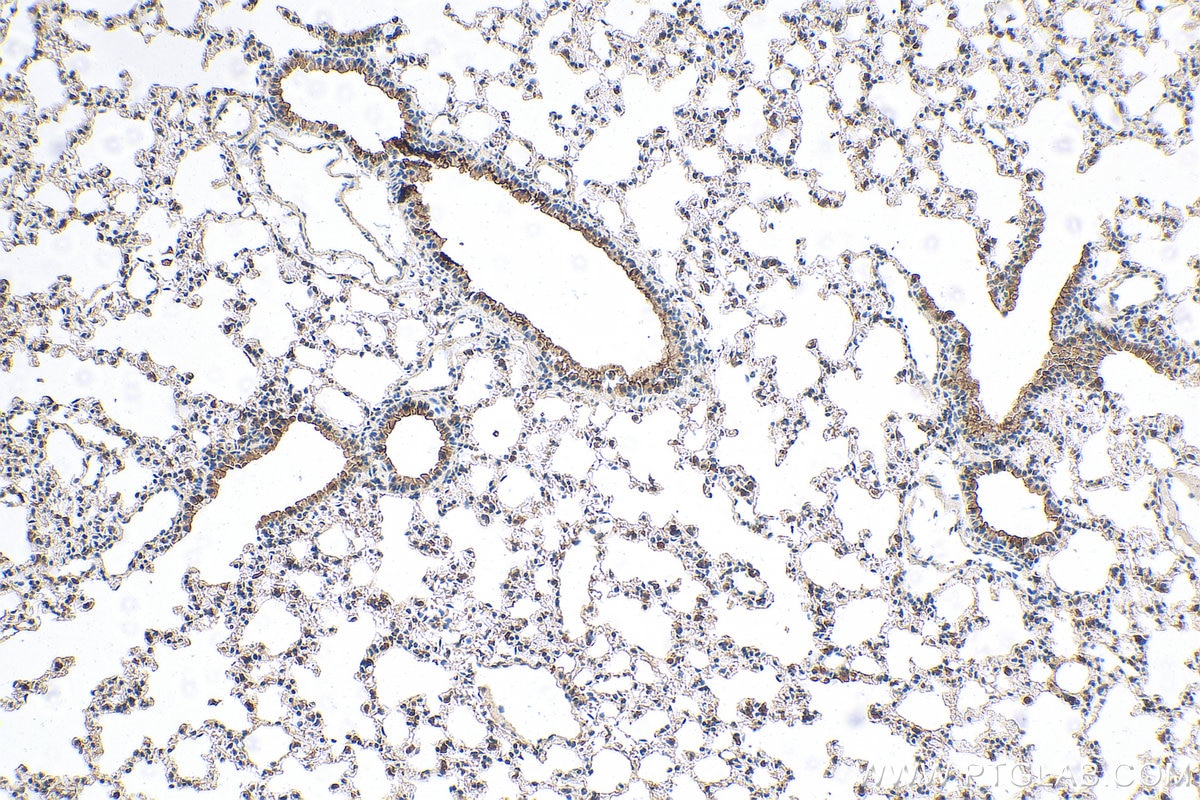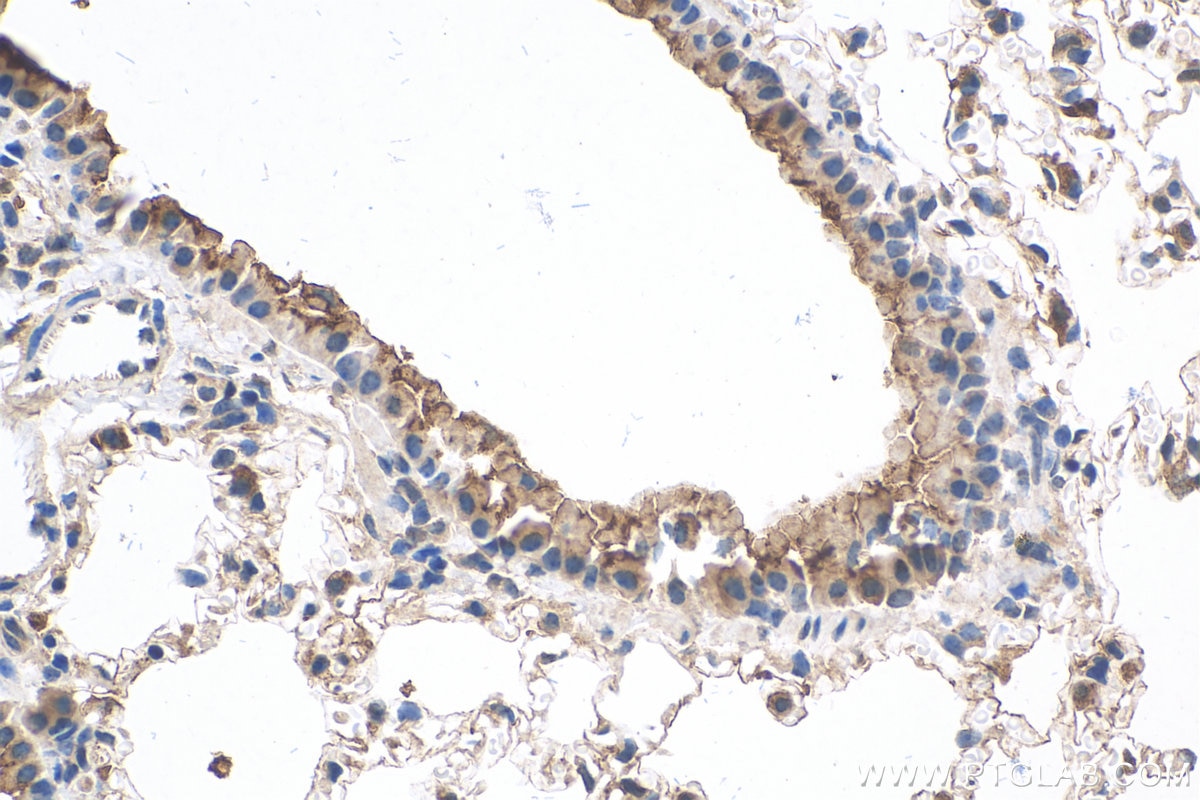Surfactant protein D Polyklonaler Antikörper
Surfactant protein D Polyklonal Antikörper für WB, IP, IHC, ELISA
Wirt / Isotyp
Kaninchen / IgG
Getestete Reaktivität
human, Maus, Ratte
Anwendung
WB, IHC, IF, IP, ELISA
Konjugation
Unkonjugiert
Kat-Nr. : 11839-1-AP
Synonyme
Geprüfte Anwendungen
| Erfolgreiche Detektion in WB | Mauslungengewebe |
| Erfolgreiche IP | Mauslungengewebe |
| Erfolgreiche Detektion in IHC | Mauslungengewebe Hinweis: Antigendemaskierung mit TE-Puffer pH 9,0 empfohlen. (*) Wahlweise kann die Antigendemaskierung auch mit Citratpuffer pH 6,0 erfolgen. |
Empfohlene Verdünnung
| Anwendung | Verdünnung |
|---|---|
| Western Blot (WB) | WB : 1:500-1:3000 |
| Immunpräzipitation (IP) | IP : 0.5-4.0 ug for 1.0-3.0 mg of total protein lysate |
| Immunhistochemie (IHC) | IHC : 1:50-1:500 |
| It is recommended that this reagent should be titrated in each testing system to obtain optimal results. | |
| Sample-dependent, check data in validation data gallery | |
Veröffentlichte Anwendungen
| WB | See 5 publications below |
| IHC | See 1 publications below |
| IF | See 2 publications below |
Produktinformation
11839-1-AP bindet in WB, IHC, IF, IP, ELISA Surfactant protein D und zeigt Reaktivität mit human, Maus, Ratten
| Getestete Reaktivität | human, Maus, Ratte |
| In Publikationen genannte Reaktivität | human, Maus, Ratte |
| Wirt / Isotyp | Kaninchen / IgG |
| Klonalität | Polyklonal |
| Typ | Antikörper |
| Immunogen | Surfactant protein D fusion protein Ag2461 |
| Vollständiger Name | surfactant protein D |
| Berechnetes Molekulargewicht | 375 aa, 38 kDa |
| Beobachtetes Molekulargewicht | 37-40 kDa |
| GenBank-Zugangsnummer | BC022318 |
| Gene symbol | Surfactant protein D |
| Gene ID (NCBI) | 6441 |
| Konjugation | Unkonjugiert |
| Form | Liquid |
| Reinigungsmethode | Antigen-Affinitätsreinigung |
| Lagerungspuffer | PBS with 0.02% sodium azide and 50% glycerol |
| Lagerungsbedingungen | Bei -20°C lagern. Nach dem Versand ein Jahr lang stabil Aliquotieren ist bei -20oC Lagerung nicht notwendig. 20ul Größen enthalten 0,1% BSA. |
Hintergrundinformationen
Surfactant protein-D (SP-D) is a pattern recognition molecule of the collectin family of C-type lectins, which consist of four structural domains: a cysteine-rich N-terminal domain, a collagen-like region, an alpha-helical coiled-coil neck domain and a C-terminal lectin or carbohydrate-recognition domain (PMID: 16213021; 15030473). SP-D is primarily expressed and secreted by type II alveolar cells (PMID: 16684127). It plays a central role in the pulmonary host defence and the modulation of allergic responses.
Protokolle
| PRODUKTSPEZIFISCHE PROTOKOLLE | |
|---|---|
| WB protocol for Surfactant protein D antibody 11839-1-AP | Protokoll herunterladen |
| IHC protocol for Surfactant protein D antibody 11839-1-AP | Protokoll herunterladenl |
| IP protocol for Surfactant protein D antibody 11839-1-AP | Protokoll herunterladen |
| STANDARD-PROTOKOLLE | |
|---|---|
| Klicken Sie hier, um unsere Standardprotokolle anzuzeigen |
Publikationen
| Species | Application | Title |
|---|---|---|
Int J Mol Sci Kub3 Deficiency Causes Aberrant Late Embryonic Lung Development in Mice by the FGF Signaling Pathway. | ||
Hum Cell Aryl hydrocarbon receptor promotes lipid droplet biogenesis and metabolic shift in respiratory Club cells. | ||
Transl Pediatr Untargeted lipidomics of bronchopulmonary dysplasia induced by hyperoxia exposure in rats | ||
Cell Biochem Funct IL-37 Protects Against Ventilator-Induced Lung Injury by Inhibiting NLRP3 Activation | ||
J Thorac Dis Deletion of LCMR1 in alveolar type II cells induces lethal impairment of lung structure and function in adult mice |





